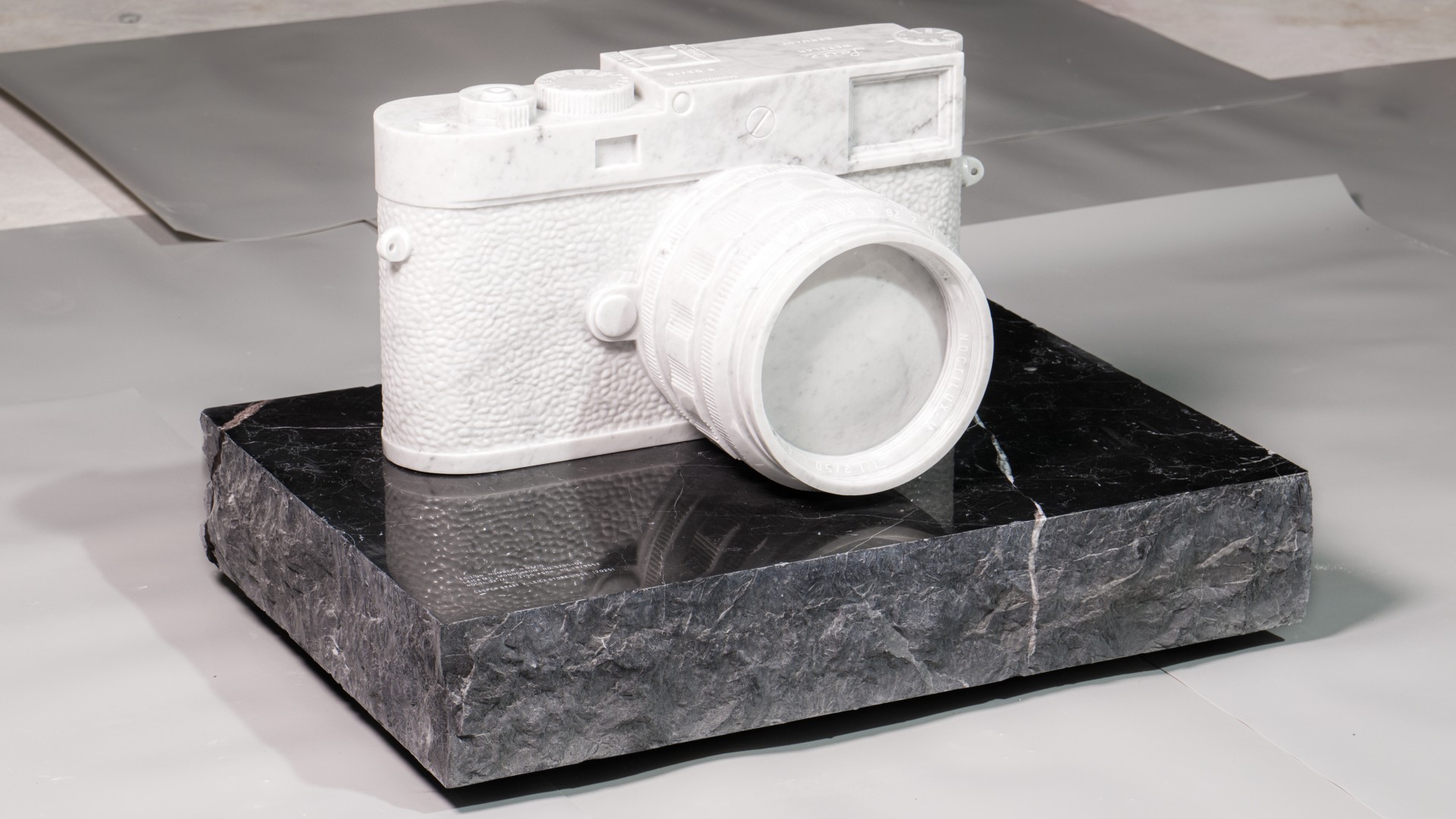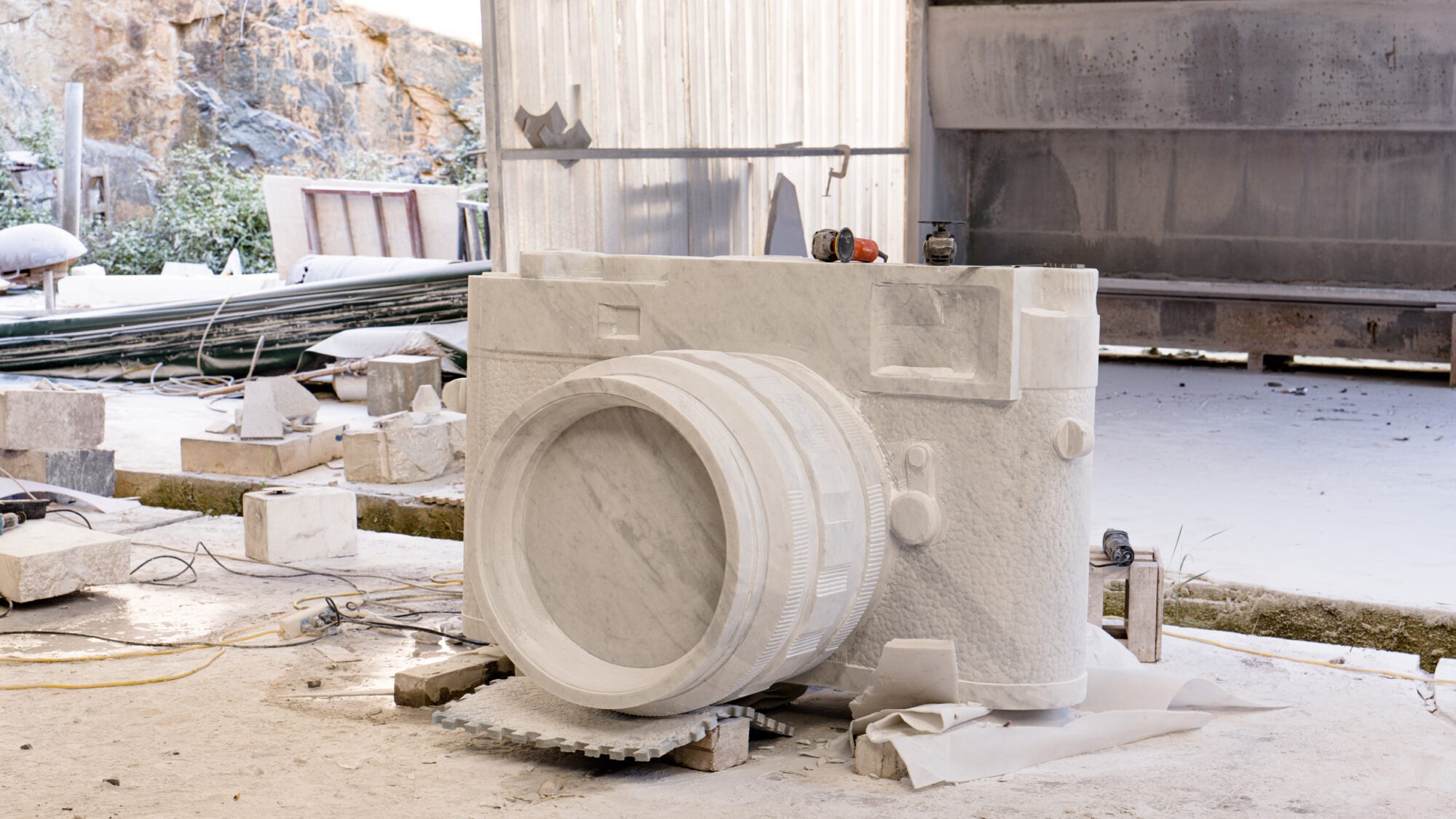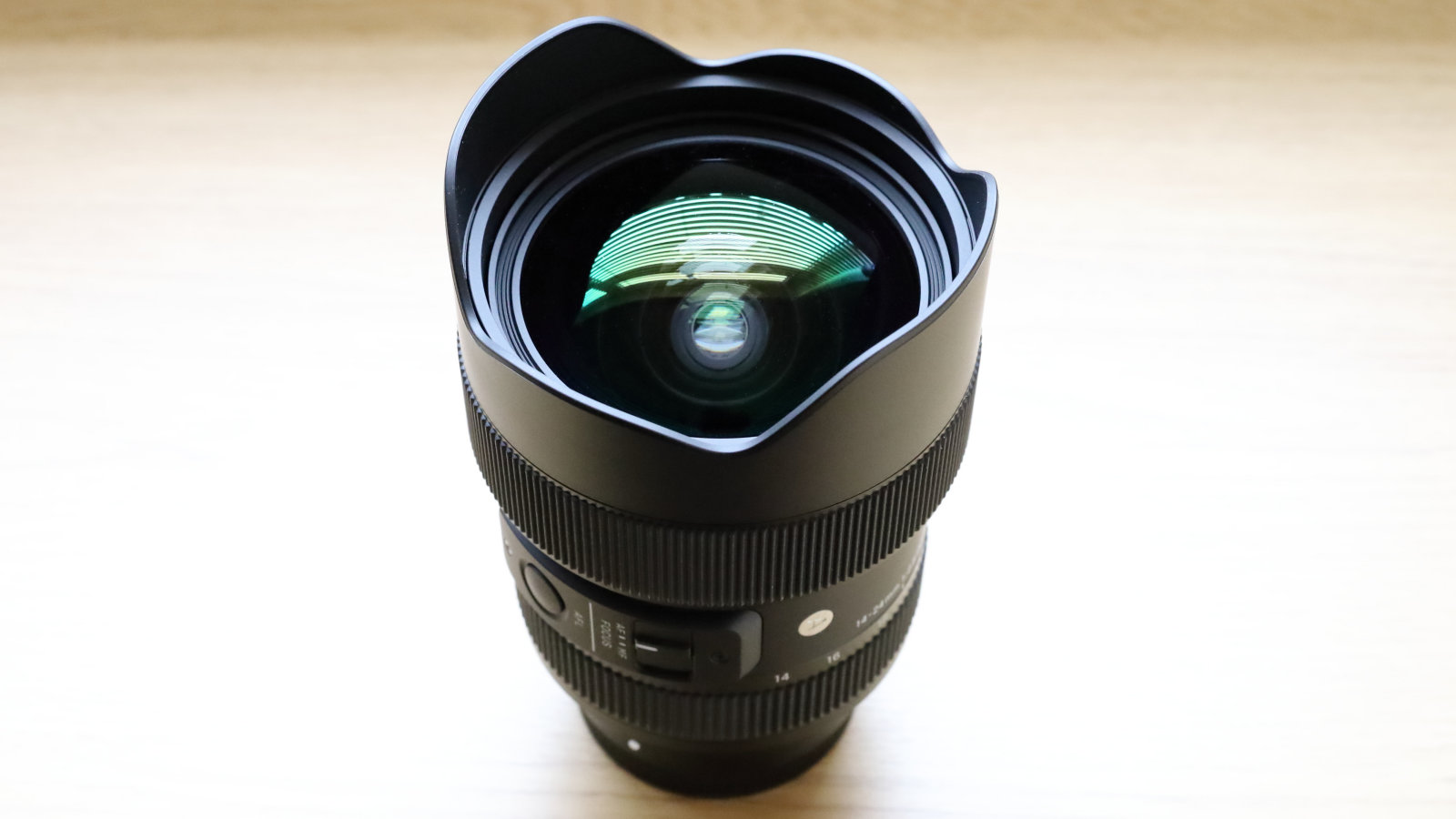
When Leica says it's celebrating its centenary with something monumental, they're not messing about. Standing outside the Ernst Leitz Museum in Wetzlar, Germany is an eight-ton marble sculpture of a Leica M11 Monochrom, carved from white Carrara marble by Dutch artist Casper Braat.
That might seem… well, a bit eccentric to say the least. But it's entirely on-brand for a company that's spent a century convincing photographers that cameras can be not just functional but objects of beauty in their own right.
The massive sculpture—complete with a black pedestal crafted from Marquina marble—towers over visitors as a "powerful symbol of the fusion between art, craftsmanship, and photography," according to Leica's press materials.
A post shared by (LR) 🔴 (@leicarumors)
A photo posted by on
And if you've got €50,000 (around $58,000 / £43,000) burning a hole in your pocket, you can buy one of 10 smaller versions.
By "smaller", by the way, we're still talking about a 375 pound / 170kg marble camera sculpture, paired with an actual limited-edition M11 Monochrom and a Noctilux-M 50mm f/1.2 lens, all with matching serial numbers.
Are they serious?
On the one hand, this might all seem like a daft stunt. But ultimately, it reflects Leica's ability to position cameras as collectible art objects. And fair play to them, because they've been doing it longer and better than anyone else.
As for Braat, he's a serious artist who studied at Amsterdam's Gerrit Rietveld Academie and Sandberg Institute, and has built a reputation on transforming everyday objects into marble sculptures that interrogate consumerism and excess. His Forever series, for example, has featured everything from McDonald's meals to designer trainers, all rendered in premium stone.
The best camera deals, reviews, product advice, and unmissable photography news, direct to your inbox!

Carving a Leica — already an aspirational object dripping with heritage — into the same Carrara marble Michelangelo used for his stutue of David? That's commentary wrapped in collaboration wrapped in commerce. And I can certainly see collectors going for it.
After all, the attention to detail is obsessive, as you'd expect when Leica's involved. Every engraving, every lens marking, every serial number on the marble sculpture corresponds precisely to the real camera. Furthermore, the inversion from the M11 Monochrom's signature black to pristine white marble works as clever symbolism; black-and-white photography rendered in actual black-and-white materials.
The installation coincides with Leica's Celebration of Photography event and marks 100 years since the first Leica camera. In that context, the eight-ton monument outside the museum makes sense as a cultural landmark. Photography has spent a century trying to be taken seriously as art—why not make the camera itself into an artwork?
Tom May is a freelance writer and editor specializing in art, photography, design and travel. He has been editor of Professional Photography magazine, associate editor at Creative Bloq, and deputy editor at net magazine. He has also worked for a wide range of mainstream titles including The Sun, Radio Times, NME, T3, Heat, Company and Bella.
You must confirm your public display name before commenting
Please logout and then login again, you will then be prompted to enter your display name.

